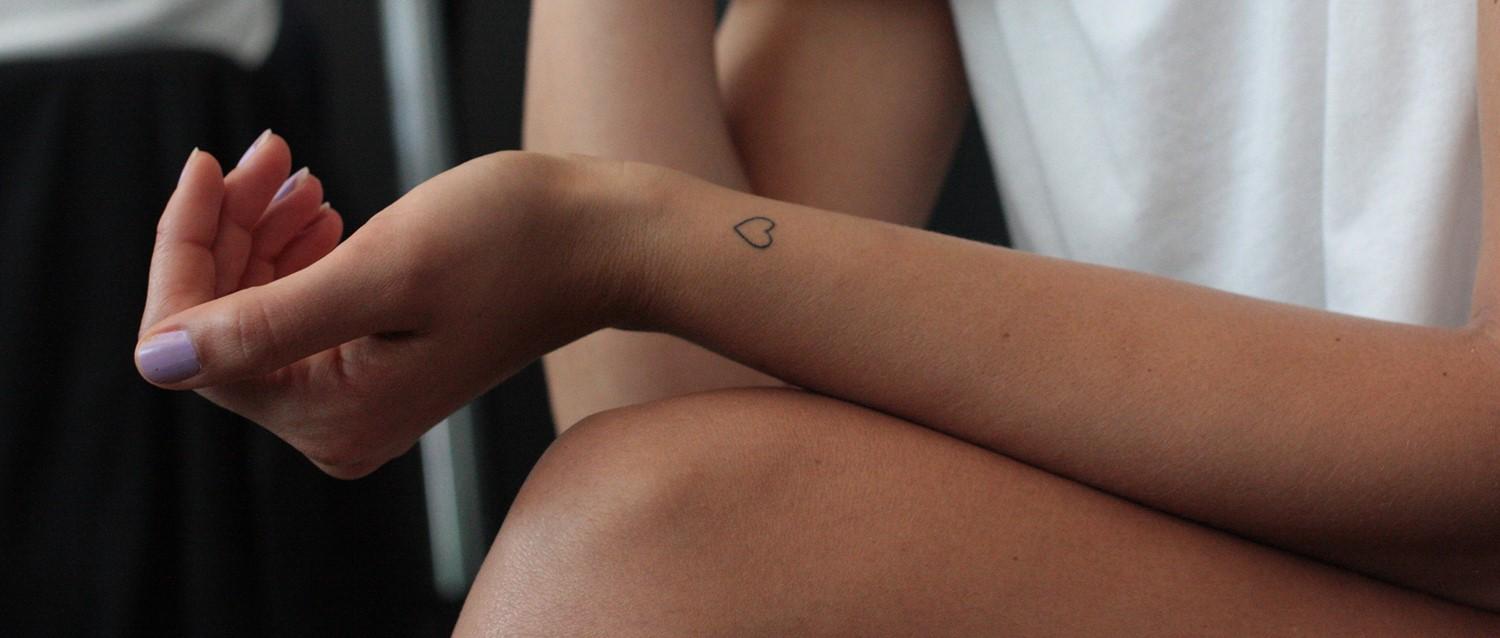
Could your PMS be PMDD?
Peer reviewed by Dr Krishna Vakharia, MRCGPLast updated by Victoria RawLast updated 7 Mar 2025
Meets Patient’s editorial guidelines
- DownloadDownload
- Share
- Language
- Discussion
Premenstrual syndrome (PMS) are a group of symptoms that you may or may not get around the time of your period. PMS symptoms can be physically and emotionally challenging. Premenstrual dysphoric disorder (PMDD), however, is a more severe form of PMS.
In this article:
Continue reading below
What is PMDD?
Most women go through a range of emotional, behavioural, and physical symptoms in the lead-up to their period. These changes are cyclical - meaning they come and go each month. While some women manage with mild PMS symptoms, others find them more demanding.
5-8% of women, however, experience moderate to severe symptoms that have a major impact on their daily routine. In comparison to PMS, these symptoms can be debilitating.
They are linked to a condition called Premenstrual Dysphoric Disorder (PMDD).
What is the difference between PMDD and PMS?
PMS is what we call the collection of symptoms women of childbearing age feel in the weeks before their period. They can be a common part of the menstrual cycle.
PMDD - formerly known as Late luteal dysphoric disorder (LLDD) - is the most severe form of PMS. PMDD symptoms closely mirror those of PMS, except they are more intense.
Dr Gowri Rocco, specialist in hormone balance and women's health describes PMDD as an extreme version of PMS.
"PMS impacts more than half the female menstruating population with mild and uncomfortable examples of bloating, cramps, fatigue, and food cravings," she says. "PMDD affects roughly 10% of the menstruating female population. It is extremely debilitating with intense and severe psychological and physical symptoms. PMDD interferes with work, social, and school life.”
The cause of PMDD isn't fully known. It may be due to an increased sensitivity to the normal hormone fluctuations that happen during your menstrual cycle. If you have a family history of PMDD, there's a higher chance of developing it yourself.
PMDD could also be triggered by:
Pre-existing anxiety or mental health conditions.
Past traumatic events.
Long-term cigarette smoking.
Obesity.
Continue reading below
What are the symptoms of PMDD?
PMDD symptoms usually appear two weeks before your period (the luteal phase) and can seriously impact your life.
Rocco explains: "People with PMDD experience debilitating psychological, gastrointestinal, and neurological symptoms that start after ovulation and last for two weeks before their period starts. They encounter an intense combination and variation of symptoms - all interfering massively with daily routines.”
Symptoms of PMDD typically include at least five of the following symptoms:
Feelings of sadness, despair, or negative thoughts about yourself.
Constant worry, tension and anxiety.
Mood swings and emotional instability.
Feeling angry, irritable and short-tempered.
Finding it hard to be interested in activities you used to enjoy.
Difficulty concentrating on tasks and feeling easily distracted.
Lacking energy and feeling constantly tired.
Craving food and overeating.
Sleeping too much and finding it hard to fall asleep.
Feeling overloaded or out of control.
Physical discomfort such as breast tenderness, headaches, muscle aches, feeling bloated, and weight gain.
Is there a link between PMDD and ADHD?
According to Rocco, 45.5% of women with ADHD have PMDD compared to 28.7% of the general population.
Attention Deficit Hyperactivity Disorder (ADHD) is a behavioural condition. People with ADHD have difficulty concentrating, often act on impulse and exhibit signs of restlessness.
It's thought that people with ADHD may experience a disruption in brain chemicals that carry signals between nerve cells (neurotransmitters.)
During the late luteal phase of the menstrual cycle, your oestrogen levels begin to decline. Because lower oestrogen levels affect these already impaired feel-good chemicals - dopamine and serotonin - ADHD symptoms can be more intense during this phase of your period.
Continue reading below
How is PMDD treated?
Since PMDD symptoms often overlap with depression and anxiety, diagnosing it is harder when these conditions are already present. In such cases, women might experience heightened emotional symptoms of existing mood disorders during their premenstrual period, rather than the PMDD itself.
A doctor would usually recommend looking at your medical history and treating the underlying condition first before diagnosing PMDD. If symptoms persist - especially around the menstrual cycle - daily symptom tracking can help confirm the condition.
"PMDD is often treated with selective serotonin reuptake inhibitors (SSRIs) which are antidepressants," says Rocco. "Pain medicine, such as NSAIDS or ibuprofen - as needed for pain - also helps with symptoms. Because PMDD is believed to be caused by the cyclical rise and fall of hormone levels - oestrogen and progesterone - birth control pills have also been used to help improve symptoms. Some patients do worse with birth control, but this is up to you and your doctor to decide."
Referral to a specialist can offer other forms of treatment if the above doesn't help - such as inducing a "menopause" and giving back the hormones as HRT- hormone replacement therapy. However, this may not be suitable for everyone.
Rocco also advises that the following lifestyle changes can help improve PMDD symptoms:
Regular exercise.
Eating more fruits, vegetables, whole grains, and legumes.
Stress management - for example, yoga, meditation and reflexology.
Taking vitamins and supplements - for example, vitamin D3 and B6, magnesium, calcium carbonate, curcumin, omega 3 fish oils, and probiotics.
Chasteberry - a herb also known as Agnus castus - is believed to reduce symptoms of irritability, anger, headaches, and breast pain. However, it is not recommended if you're breastfeeding or trying for a baby.
Talk therapy such as Cognitive Behavioural Therapy (CBT) can help control PMDD symptoms.
If you think you're experiencing symptoms of PMDD, talk to your doctor to get a proper diagnosis and possible course of treatment. They will also discuss your medical history and lifestyle habits to see if they're connected to these symptoms.
The mental health charity Mind suggests tracking your symptoms for at least two months to help identify patterns and triggers. They also offer advice on where to find support for PMDD, along with self-care practices to boost your emotional wellbeing.
Patient picks for Periods and period problems

Women's health
How to deal with your period at a festival
The sun is out, you've packed your glitter and you're ready to let loose at a festival. But suddenly, you come on your period - and the last thing you've ever felt like doing is sleeping in a tent with limited access to showers. Dealing with your period at a festival or when you're camping isn't ideal, whether it's trying to change a tampon in a hot Portaloo, or coping with cramps when you just want to have fun.
by Lydia Smith

Women's health
What a missed period could mean if you're not pregnant
Does your period show up like clockwork each month? If you're not pregnant, you might be wondering why you've skipped right past the one week you dread every month. But here's the thing: missed or late periods happen for many reasons other than pregnancy. We speak to the experts about a few common causes of irregular periods.
by Sara Lindberg
Continue reading below
Article history
The information on this page is peer reviewed by qualified clinicians.
Next review due: 6 Mar 2028
7 Mar 2025 | Latest version
1 Jul 2024 | Originally published
Authored by:
Victoria Raw

Ask, share, connect.
Browse discussions, ask questions, and share experiences across hundreds of health topics.

Feeling unwell?
Assess your symptoms online for free
Sign up to the Patient newsletter
Your weekly dose of clear, trustworthy health advice - written to help you feel informed, confident and in control.
By subscribing you accept our Privacy Policy. You can unsubscribe at any time. We never sell your data.